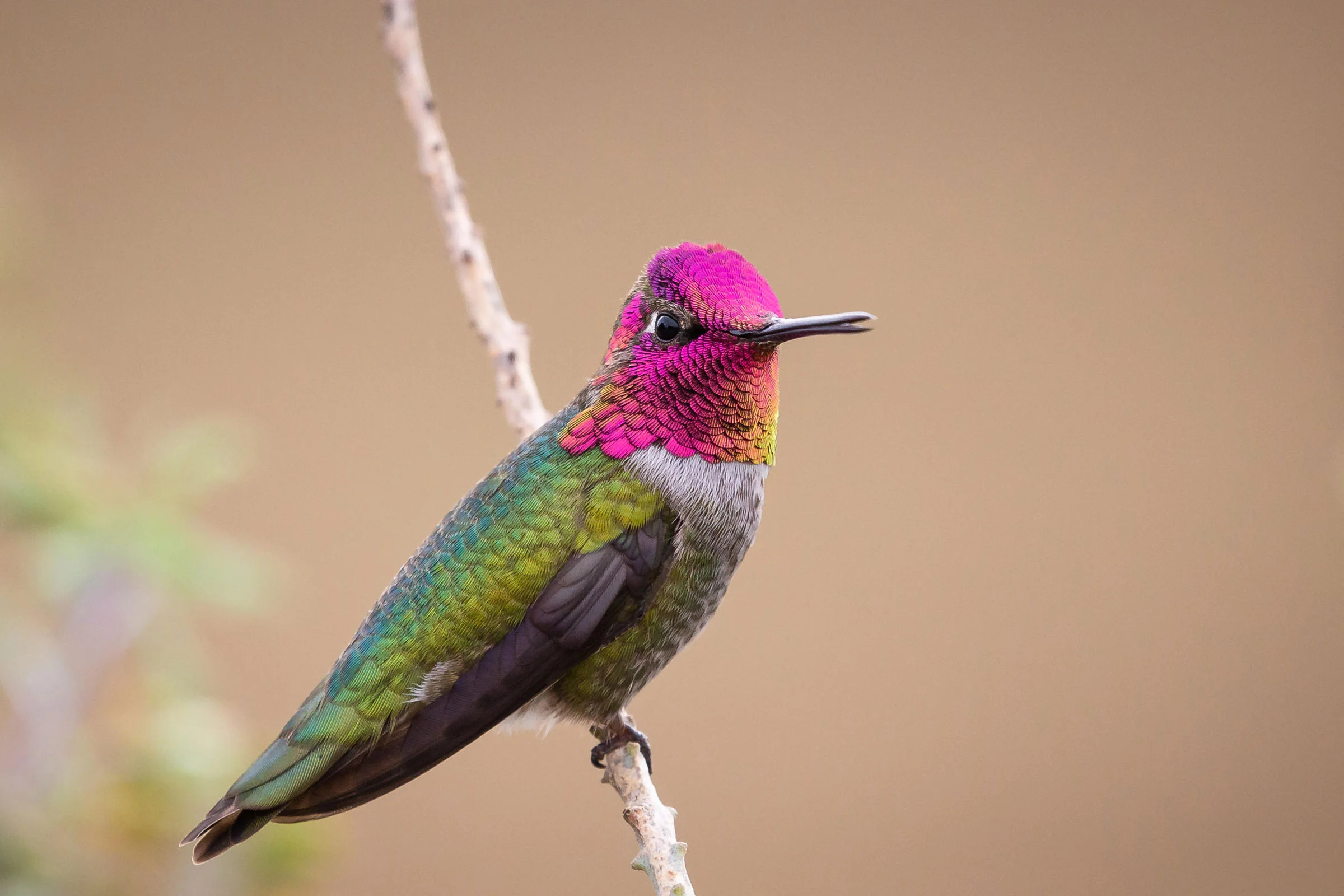
Hummingbirds are fascinating creatures that capture our attention with their tiny size and incredible agility. These pint-sized birds have always intrigued nature enthusiasts and bird-watchers alike. With their ability to hover in mid-air and their vibrant plumage, it’s no wonder hummingbirds are a favorite among bird enthusiasts.
In this article, we will explore 15 intriguing facts about hummingbirds that will further enhance your understanding and appreciation for these remarkable creatures. From their astonishing flight capabilities to their impressive feeding habits, we will delve into the world of hummingbirds and uncover some lesser-known aspects of their lives.
So, let’s dive into this captivating exploration of the fascinating world of hummingbirds and discover some amazing facts that will leave you in awe of these miniature aviators.
Key Takeaways:
- Hummingbirds are the smallest birds, but they have big personalities and can fly at incredible speeds of up to 60 miles per hour, making them one of the fastest birds in the world.
- With over 300 species, hummingbirds play a crucial role in plant pollination and have unique abilities like hovering in mid-air and going into a torpor state to conserve energy.
Hummingbirds are the smallest birds in the world.
With an average length of just 3-5 inches and weighing less than an ounce, hummingbirds are known for their tiny size but big personalities.
There are over 300 species of hummingbirds.
These beautiful birds can be found across the Americas, from Alaska to Chile, with each species having its own unique characteristics and vibrant colors.
Hummingbirds have a unique flying ability.
They can hover in mid-air, fly forward, backward, and even upside down! Their wings flap at an incredible rate of up to 80 times per second.
Hummingbirds have a high metabolism.
Due to their rapid wing movements and energetic lifestyle, hummingbirds need to consume half their body weight in nectar each day to stay energized.
Hummingbirds have a long lifespan compared to their size.
While their small size might make you think they have a short lifespan, hummingbirds can live up to 5-9 years in the wild and even longer in captivity.
Hummingbirds have excellent vision.
They can see a vast range of colors, including ultraviolet light, which helps them locate nectar-rich flowers.
Hummingbirds have a unique feeding technique.
They insert their long, thin beaks deep into flower blossoms to extract nectar using their specialized tongues.
Hummingbirds are incredibly fast.
They can fly at speeds of up to 60 miles per hour, making them one of the fastest birds in the world.
Hummingbirds have a unique heartbeat.
With an average heart rate of around 1,200 beats per minute, their hearts beat faster than any other bird species.
Hummingbirds are territorial.
Males fiercely guard their feeding and nesting territories, engaging in high-speed aerial battles to protect their space.
Hummingbirds are expert pollinators.
As they move from flower to flower, their heads get covered in pollen, aiding in the pollination of various plant species.
Hummingbirds can go into a torpor state.
During colder nights or when food sources are scarce, they can lower their body temperature and enter a state of suspended animation to conserve energy.
Hummingbirds have a unique courtship ritual.
Males perform intricate aerial displays, including dives, loops, and figure-eights, to attract female mates.
Hummingbirds have a diverse range of vocalizations.
They produce various chirps, whistles, and trills to communicate with each other, especially during territorial disputes.
Hummingbirds play an important role in plant pollination.
Their long beaks and tongues allow them to access nectar in flowers that other pollinators cannot reach, thereby facilitating the spread of plant species.
Conclusion
Hummingbirds are fascinating creatures that captivate our attention with their small size and incredible agility. These 15 facts highlight just a fraction of the remarkable characteristics and behaviors of these avian beauties. From their speedy wings to their unique ability to hover in mid-air, hummingbirds truly are a marvel of nature.We have learned about their vibrant plumage, their diet consisting primarily of nectar, and their role as important pollinators. We have also discovered that hummingbirds have an impressive memory, can fly at speeds of up to 60 miles per hour, and can even see ultraviolet light.These facts emphasize the importance of creating a welcoming environment for hummingbirds by planting native flowers and providing feeders filled with sugar water. As we continue to learn more about these delicate creatures, we can appreciate the wonder and beauty they bring to our gardens and lives.
FAQs
1. How fast do hummingbirds’ wings beat?
Hummingbirds have the ability to beat their wings extremely fast, averaging at around 50 to 80 beats per second!
2. How long do hummingbirds live?
The lifespan of a hummingbird varies depending on the species. On average, they live for about 3 to 5 years, but some can live up to 10 years or more.
3. Are all hummingbirds brightly colored?
No, not all hummingbirds have vibrant plumage. While some species display brilliant hues, others have more muted colors or are even iridescent. It depends on the species and their unique adaptations for camouflage or attracting mates.
4. How many flowers does a hummingbird visit in a day?
A single hummingbird can visit hundreds of flowers in a given day, as they need to consume a high amount of nectar to fuel their metabolisms.
5. Do hummingbirds only eat nectar?
While nectar is their primary source of energy, hummingbirds also consume small insects and spiders for additional nutrients.
6. How do hummingbirds build their nests?
Hummingbirds build their nests using spider silk and plant materials such as leaves, feathers, and moss. They weave these materials together to create a small cup-shaped nest.
7. Do hummingbirds migrate?
Yes, many hummingbird species are known for their impressive migratory journeys. They can travel thousands of miles between their breeding grounds and wintering grounds.
8. How do hummingbirds hover in mid-air?
Hummingbirds are able to hover in mid-air due to the rapid flapping of their wings, which creates enough lift to counteract gravity.
9. How do hummingbirds find their way back to the same feeding spots?
Hummingbirds rely on their excellent memory and visual cues to remember the locations of feeding spots. They have an astonishing ability to recall specific landmarks and even the position of individual flowers.
10. Can hummingbirds recognize humans?
While hummingbirds may become accustomed to human presence, they don’t have the ability to recognize specific individuals like we do. However, they can display curious behavior and may approach humans in search of food.
Hummingbirds are truly remarkable creatures, and their incredible abilities never cease to amaze. From their sword-like bills to their unique relationship with plants like hummingbird mint, these tiny birds pack a big punch in the natural world. If you're curious to learn even more mind-blowing facts about the world's smallest bird, be sure to explore our other articles that delve deeper into the fascinating lives of these winged wonders.
Was this page helpful?
Our commitment to delivering trustworthy and engaging content is at the heart of what we do. Each fact on our site is contributed by real users like you, bringing a wealth of diverse insights and information. To ensure the highest standards of accuracy and reliability, our dedicated editors meticulously review each submission. This process guarantees that the facts we share are not only fascinating but also credible. Trust in our commitment to quality and authenticity as you explore and learn with us.


